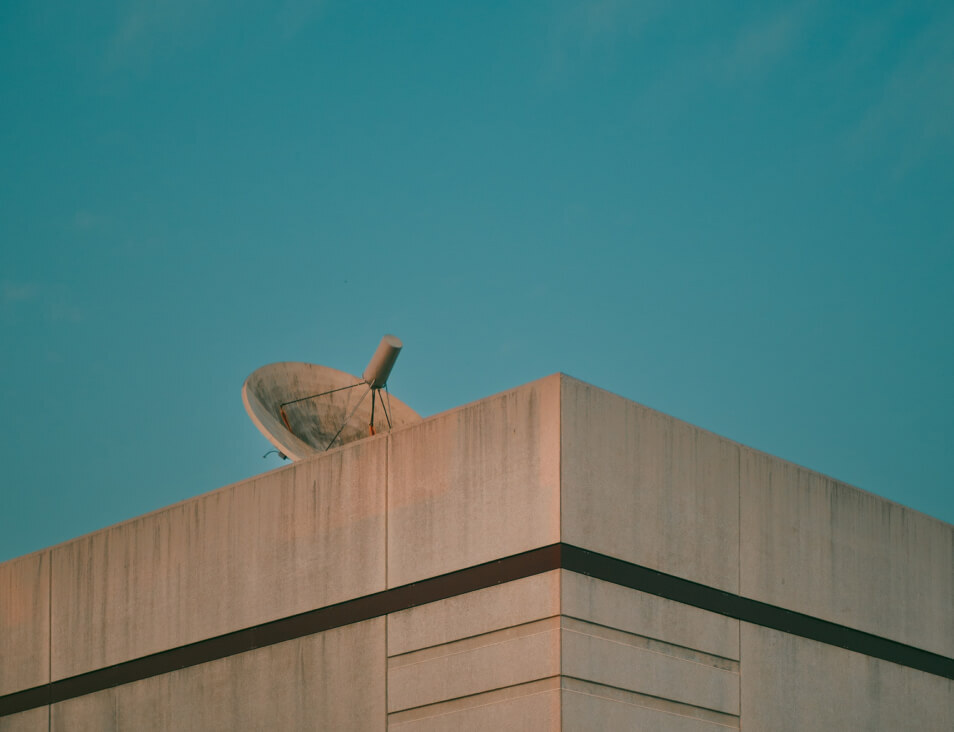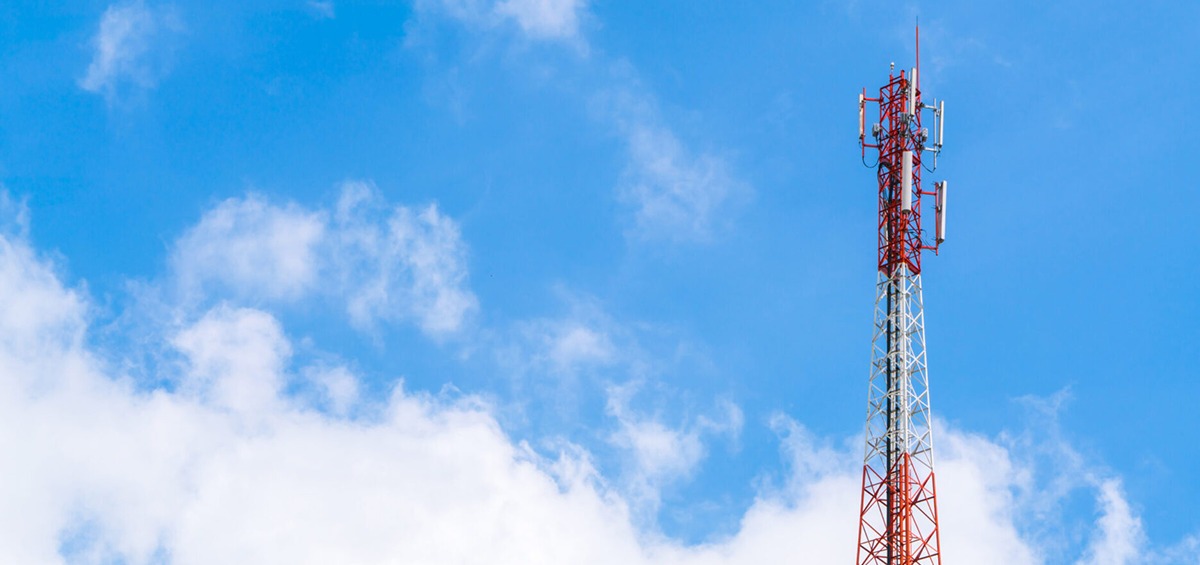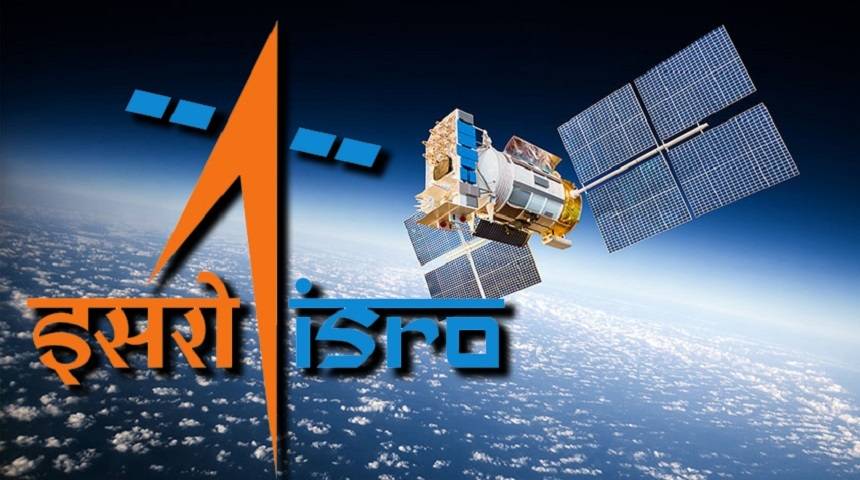What is the draft Bill about?
The draft Indian Telecommunication Bill, 2022 (Bill) is an attempt by the Department of Telecommunications (DoT) to consolidate various legislations presently governing the telecommunication landscape in India. Another key reason for bringing into force a new regulatory framework is to bring the law at par with technological advancements and remove obsolete provisions from the colonial era laws it seeks to replace.[1]
The Bill, which was released[2] for public consultation on 22 September 2022 along with an explanatory note[3] (Note), will consolidate three laws including the Indian Telegraph Act, 1885, the Wireless Telegraphy Act, 1933 and the Telegraph Wires (Unlawful Possession) Act, 1950.
What will the draft bill apply to?
The Bill empowers the central government to govern three key aspects of telecom: telecommunication services and networks; telecommunication equipment and infrastructure; and spectrum, including its assignment. As a result, the bill applies to any entity that:
- Provides a telecommunication services;
- Operates a telecommunication network;
- Owns telecommunication equipment and infrastructure; and
- Is assigned or seeks assignment of spectrum.
What are the key provisions?
The key provisions of the Bill are discussed below:
Broad Definitions
The Bill introduces a broad definition of ‘telecommunication services’. It now includes internet-based services, in-flight and maritime connectivity, interpersonal communications services, machine to machine communication services, and over-the-top (OTT) based communication services that are made available to users by telecommunication. Other telecommunication services included in the definition are: (i) broadcasting, (ii) communication services including electronic mail, voice mail, voice, video, data, audiotex services, videotex services, fixed and mobile services, (iii) internet and broadband services (v) satellite-based communication services and any other service notified by the central government to be telecommunication services.[4] The term telecom is also defined broadly, and means a transmission, emission, or reception of any message by wire, radio, optical or other electro-magnetic systems.[5] Message is defined as any sign, signal, writing, image, sound, video, data stream or information intended for telecom.[6]
Licensing, registration, and authorization
Under the Bill, four types of permissions are identified – license, registration, authorization and assignment (only for spectrum).[7] While the Bill does not differentiate between the four types of permissions, it clarifies that a license is only required for providing telecommunication services or operating telecommunication networks[8]. Registration must be obtained for establishing telecommunication infrastructure[9] and an authorization is essential for the possession of wireless equipment[10]. Assignment only applies to spectrum.
While the Note does not go into much detail, it reasons that for specific cases such as establishing telecommunication infrastructure, a registration requirement has been introduced to simplify the process of setting it up.[11]
To ensure policy continuity, the Note clarifies that entities licensed under the previous license conditions, will be allowed to operate under their erstwhile licenses until migration.
KYC and caller id requirements
The Bill requires licensed entities to ensure that they identify the persons to whom they provide telecommunication services. The Bill places an obligation on telecommunication service providers to do this through a ‘verifiable mode’, as prescribed by the government.[12]
It is further necessary for the licensed entities to incorporate caller-id like features to enable receivers of messages to identify the sender.[13] Speaking at an event, Union Minister for Electronics & IT, Ashwini Vaishnaw, stated that identity disclosure is essential to curbing frauds and other malpractices.[14]
Right of way
The Note also points out that the currently applicable Right of Way Rules, 2016, have a limited impact in addressing bottlenecks in rapid expansion of telecommunication infrastructure. [15]
To ensure that right of way is exercised in a uniform and non-discriminatory manner, the Bill establishes a framework to address establishment of telecommunication infrastructure on public property[16]and creates enabling provisions in respect of private property.[17]
Facility providers will need to seek right of way through an application – in cases of both public and private property. In case of public property, the rejection of an application for right of way can only be for limited substantive grounds.[18] While the Bill aims to create a transparent right of way system, it empowers the central government to step in and ensure that right of way is granted to facility providers – even in cases of private property. [19]
Additionally, the central government is empowered to establish common ducts and cable corridors, which will be made available on open access basis to telecommunication facility providers.[20]
Powers of the central government
The Bill includes wide-ranging powers for the central and state governments in the event of a public emergency or in interest of public safety. These powers include taking temporary possession of any telecommunication services, networks or infrastructure from a licensee or registered entity or provide for a priority call routing scheme. The Bill also provides for suspension of transmission in cases of public emergency.[21] The government can also mandate interception/detainment/disclosure of messages, suspension of communications, or otherwise transmit certain announcements for public safety and national security purposes
In the event of war, or in the interests of national security, or to preserve friendly relations with foreign states, the central government can issue certain directions. These include the taking control and management of a telecommunication network, service or infrastructure; usage of telecommunication networks, services and equipment; and the suspension or prohibition of specified telecommunications equipment.[22]
Standard setting by central government
To better the quality and reliability of telecommunication, the Bill empowers the central government to prescribe standards for telecommunication equipment, services, network and infrastructure; specific standards for manufacturers, importers and distributors of telecommunication equipment and for reliability of telecommunication services to the public.[23]
Regulatory sandbox
Under the Bill, the Central Government is empowered to create a regulatory sandbox for the telecommunications sector.[24] This will allow for the testing of new technology under controlled conditions, thereby bolstering innovation and technology development.
Protection and duties of users
‘User protection’ has been declared as an important policy objective of the Government.[25] The Bill creates a framework for the government to protect users from ‘specified messages’. ‘Specified messages’ have been defined as messages that offer, advertise, or promote goods, services, solicits interest in property, businesses, employment or investment.[26]
The framework may include the need to obtain prior consent, creation of a ‘Do Not Disturb’ register for users, and mechanisms for reporting messages.
The Bill also lays down the duties of users. It places a duty on users to not furnish false information, suppress material information or impersonate others when proving identity to avail telecommunication services.[27]
Insolvency and restructuring
The Bill simplifies the procedure for mergers, demergers, acquisitions and other forms of corporate restructuring.[28] It lays down that the entity undergoing corporate restructuring needs to ensure compliance with applicable law, and need only provide intimation of the same to the DoT.[29]
Offences and penalties
Any offence under the Bill may be punished with a fine, imprisonment, suspension of telecommunication services or a combination of the above.[30] For companies, the employees who were responsible for the conduct or the business relating to the offence at the time the offence was committed will be punished.[31]
The Bill also categorises some contraventions as criminal offences. This is particularly concerning given the wide definition of ‘telecommunication services’. As per the Bill the offence of providing telecommunication services or establishing telecommunication networks without a license can lead to imprisonment for one year or fine up to INR 50 lakh.[32] The Bill also categorises knowingly using a telecommunication service, network or infrastructure, which does not have the required license or registration as a criminal offence punishable with fine up to INR 1 lakh.[33]
As a safeguard, the Bill requires penalties to be commensurate with the severity of the breach of terms and conditions of permissions, and other mitigating or aggravating factors.[34]
The Bill also empowers the central government to establish civil liabilities, including compensation.[35] Such compensation will be payable by any person causing damage to telecommunication network or telecommunication infrastructure to the licensee or registered entity.
Spectrum assignment
To ensure that the access to telecommunication services is widespread, the Bill provides that the central government may notify a National Frequency Allocation Plan (NFAP) for the use and allocation of spectrum.[36] Currently, the NFAP 2018 is operational.
As per the Bill, spectrum assignment will take place through auction[37]. However, the Bill also recognises that for certain functions, spectrum may also be assigned administratively, that is, without holding an auction or in any other way decided by the government.[38] These functions include radio backhaul services; satellite-based services like teleports, Direct to Home (DTH), among others covered in Schedule 1 of the Bill.
To ensure that wastage of spectrum as a public resource is minimised, the Bill creates an enabling framework for optimal and flexible utilization of spectrum[39]. It enables technology agnostic spectrum use; re-farming and re-purposing of spectrum; sharing, trading, leasing and surrender of spectrum and return of unused spectrum.[40]
Retrospective effect
The Bill provides that terms and conditions of license, registration, authorization and assignment will not be modified with retrospective effect to the detriment of the applicants. However, the Bill also provides that retrospective modifications may be made in the event of public emergency and national security.[41]
What are some of the concerns which emerge at first glance?
Regulatory overlaps: The widening of the definition of ‘telecommunication services’ to include OTT communication platforms such as WhatsApp, Telegram, Signal among others, may potentially lead to regulatory or jurisdictional overlaps. At present, such OTT communication platforms are governed under the existing Information Technology Act, 2000 (IT Act). The requirement to obtain a license to provide such services will now bring the OTT Communication platforms under the direct regulatory ambit of DoT. Between the IT Act and the license conditions imposed by the DoT, regulatory overlaps will invariably arise. In such a case, it is important that clear regulatory boundaries are set.
Unchecked use of State powers: The Bill gives broad powers to the central government in the following situations, without any accompanying checks and balances. As per the Bill, the government can widen the ambit of services governed by notifying additional telecommunication services under the Bill.[42] This lends a degree of uncertainty to the regulatory reach power to the DoT. The government is further empowered to conduct search and take possession of unauthorized telecommunication network or equipment.[43] The Bill also empowers the central and state government to intercept messages in the interest of public safety and emergency without the providing clearly defined guardrails for it.[44] The government may also order suspension of communication on the grounds of public safety and emergency.[45]
The usage of vague, undefined terms such as ‘public safety’, ‘emergency’, the absence of judicial oversight and accountability on surveillance powers may also open the Bill to scrutiny. Further, while the Bill provides that an appeal may be preferred[46], it does not disclose any details of the appellate authority.
Diluting the role of Telecom Regulatory Authority of India (TRAI): In the amendments to TRAI Act, 1997, the Bill seeks to do away with provisions for referencing and back referencing recommendations between the DoT and TRAI.[47] This gives more power to the DoT to undertake policy facing decisions, without the statutory requirement of consulting TRAI. This will give DoT more control over policy making, dilute the role of TRAI and at the same time remove the mechanism of checks and balances between the policy maker (TRAI) and the licensor (DoT).
Threshold for public emergency, ‘interest of public’[48]and national security provisions[49]:The government may take temporary possession of telecommunication services/ infrastructure/ network from a licensee or registered entity, in case of a public emergency or in the interests of public safety. Intriguingly, the threshold for ‘public safety’ or ‘public emergency’ has not been defined in the Bill, and it is left to the subjective interpretation of the executive. Similarly, ‘public emergency’ or ‘interest of public safety’ may be used as grounds to authorize surveillance or order internet shut-downs as well.
The Bill also gives the central government wide-ranging powers in the ‘interests of national security’, war, or to maintain friendly relations with foreign states. These powers include taking control and management of the telecom services and infrastructure, suspending operations of telecom services merely through issuing a notification.
Inclusion of OTT platforms under the Bill: The government’s intent[50] in widening the definition of ‘telecommunication services’ to include OTT communication services may be to bring OTT communication/messaging platforms such as Whatsapp, Telegram, Signal etc. within the fold of the Bill.[51] The inclusion of such internet-based communication platforms within the regulatory ambit of DoT has been a contentious policy issue – and a long-standing demand of the powerful Indian telecommunications lobby.[52] However, the definition of ’telecommunication services’, meaning any service provided through telecommunication, i.e., transmission, emission or reception of any messages through wire, radio, optical or other electro-magnetic systems[53] is all encompassing, and can potentially cover a wide range of digital platforms.
To lend further confusion to the matter, the phrase ‘OTT communication services’ has not been defined in the Bill.
What will happen next?
As per the policy on pre-legislative consultation[54], public consultation should take place for a period of 30 days post the release of a draft legislation. Upon the conclusion of the public consultations, the government could draft an updated bill, and table it in Parliament. The Bill is open for feedback till 20 October 2022.[55]
What led up to the new bill?
The build-up to the Bill has been long drawn and interspersed with many shifts in perspective by the government. Below, we provide a brief timeline of events leading up to the release of the Bill:
| Timeline | Event |
| March 2015 | The Telecom Regulatory Authority of India (TRAI) released a consultation paper titled ‘Regulatory Framework for Over-The-Top (OTT) services’,[56] wherein it sought to regulate OTT platforms in India. Some of the reasons for such a proposal included correcting the regulatory imbalance between OTT platforms and telecom service providers, given the regulatory vacuum around OTT platforms. Protection of consumer interests, development of measures for security, privacy and safety of consumers also formed part of the rationale. |
| November 2017 | TRAI sought to begin consultations on the regulation of OTT platforms, amidst demands of parity from telecom service providers and rapid developments in the OTT ecosystem. The stakeholder comments received in the March 2015 consultation paper were also considered by the TRAI.[57] |
| November 2018 | TRAI resurrected the issue of regulation of OTT communication services by releasing a consultation paper titled ‘Regulatory Framework for OTT Communication Services’.[58] |
| August 2020 | In an attempt to create a more efficient licensing framework and unbundle opportunities in the telecommunication space, the TRAI released a consultation paper on ‘Enabling Unbundling of Different Layers Through Differential Licensing’.[59] TRAI recognised that the licensing framework in its unified license form, did not segregate between infrastructure, network, and service layers. With this consultation paper, TRAI sought to increase the scope of infrastructure providers so that they can operate as an independent infrastructure layer. |
| September 2020 | After consultations with stakeholders, the TRAI concluded that it was not the right time to regulate OTT platforms in India.[60] It was of the view that market forces should be allowed to respond to the situation without prescribing any regulatory intervention. Though, it added two caveats. First, it reserved the right to intervene if required. Second, it would wait until more clarity emerged on this issue from international jurisdictions including the International Telecommunications Union’s study (ITU). |
| November 2020 | The central government amended the Allocation of Business Rules and issued a gazette notification bringing OTT platforms under the jurisdiction of the Ministry of Information & Broadcasting.[61] |
| December 2021 | In order to allow for greater ease of doing business in the telecommunication and broadcasting sectors, the TRAI released a consultation paper on the ease of doing business.[62] Its main aim was to bring about: (a) simplified applications and well-defined processes; (b) define appropriate timelines for queries, approvals, and deemed approvals (c) create effective mechanisms for better coordination among inter-ministerial/departments and (d) digitised systems for transparent end-to-end online tracking systems. The paper focused on simplification and consolidation of the processes of various ministries and departments including, the DoT, TRAI, MIB, MeitY, department of space, and ministry of power. |
| July 2022 | The DoT released a consultation paper on the need for a new legal framework governing telecommunication in India.[63] The consultation paper focused on the implementation of a simpler regulatory framework that also accommodates technological advancements in telecommunication. This demand has also been echoed by various stakeholders in the telecom sector. |
| September 2022 | Union minister for IT, Ashwini Vaishnaw, declared that many reforms are in the pipeline for the telecom sector. He called for the industry to do its part to improve the quality of services offered to consumers.[64] The central government released the draft Indian Telecommunications Bill, 2022 for stakeholder comments by 20th October 2022.[65] In the press release for the Bill, Vaishnaw stated that the government is not in a hurry to pass the Bill and assured an extensive consultation process. He discussed the process to be followed – and said the Bill may take between 6-10 months to be passed.[66] |
This article has been authored by Saudamini Sharma and Ajey Karthik with inputs from Nehaa Chaudhary, Vijayant Singh, and Aman Taneja.
[1]https://dot.gov.in/sites/default/files/Explanatory%20Note%20to%20the%20draft%20Indian%20Telecommunication%20Bill%2C%202022.pdf
[2] https://dot.gov.in/sites/default/files/Draft%20Indian%20Telecommunication%20Bill%2C%202022.pdf
[3] https://dot.gov.in/sites/default/files/Explanatory%20Note%20to%20the%20draft%20Indian%20Telecommunication%20Bill%2C%202022.pdf
[4] Clause 2(21), Bill
[5] Clause 2(17), Bill
[6] Clause 2(9), Bill
[7] Clause 4, Bill
[8] Clause 4(3), Bill
[9] Clause 4(4), Bill
[10] Clause 4(5), Bill
[11] Para 11, Note
[12] Clause 4(7), Bill
[13] Clause 4(8), Bill
[14] Press release of the Bill accessible here: https://www.youtube.com/watch?v=_FoRSdrB_zk
[15] Para 31, Note
[16] Clause 13, Bill
[17] Clause 14, Bill
[18] Para 35, Note.
[19] Clause 14, Bill
[20] Clause 17, Bill
[21] Clause 24, Bill
[22] Clause 25, Bill
[23] Clause 23, Bill
[24] Clause 32, Bill
[25] Para 60, Note
[26] Clause 33, Bill
[27] Clause 35, Bill
[28] Chapter 5, Bill
[29] Clause 19(1), Bill; Paragraph 41, 42, Note
[30] Clause 47(1), Bill
[31] Clause 48, Bill
[32] Item 1, Schedule 3, Bill
[33] Item 8, Schedule 3, Bill
[34] Para 25, Note
[35] Clause 38, Bill
[36] Clause 5(1), Bill
[37] Clause 5(2)(a), Bill
[38] Clause 5(2)(b), Bill
[39] Clause 5(6), (7) and (8), Bill
[40] Para 21, Note
[41] Clause 4(2), Bill
[42] Clause 2(7), Bill
[43] Clause 50, Bill
[44] Clause 24(2), Bill
[45] Clause 24(2)(b), Bill
[46] Clause 10, Bill
[47] Clause 46(f), Bill
[48] Clause 24, Bill
[49] Clause 25, Bill
[50] https://economictimes.indiatimes.com/industry/telecom/telecom-news/whatsapp-telegram-signal-may-get-a-new-rule-book-centre-to-start-consultations-soon/articleshow/93381180.cms?from=mdr
[51] Clause 2(21), Bill
[52] https://www.thehindubusinessline.com/info-tech/dot-seeks-trais-view-to-regulate-internet-calling-messaging-apps-like-whatsapp-signal/article65834256.ece
[53] Clause 2(17), Bill
[54] https://legislative.gov.in/sites/default/files/plcp.pdf
[55]https://dot.gov.in/sites/default/files/Inviting%20Comments%20on%20the%20draft%20Indian%20Telecommunication%20Bill%2C%202022.pdf
[56] https://www.trai.gov.in/sites/default/files/OTT-CP-27032015.pdf
[57] https://economictimes.indiatimes.com/tech/internet/trai-to-begin-separate-consultation-on-ott-regulation/articleshow/61833207.cms?from=mdr
[58] https://www.trai.gov.in/sites/default/files/CPOTT12112018.pdf
[59] https://www.trai.gov.in/sites/default/files/Consultation_Paper_20082020.pdf
[60] https://www.trai.gov.in/sites/default/files/Recommendation_14092020_0.pdf
[61] https://www.hindustantimes.com/india-news/govt-to-regulate-ott-online-news-platforms/story-JGd9C2zEKHZ9Rgiug3d9XM.html
[62] https://trai.gov.in/sites/default/files/CP_08122021.pdf
[63] https://dot.gov.in/whatsnew/consultation-paper-need-new-legal-framework-governing-telecommunication-india
[64] https://pib.gov.in/PressReleseDetail.aspx?PRID=1859497
[65] https://www.hindustantimes.com/technology/it-minister-releases-draft-version-of-telecom-bill-2022-share-your-feedback-till-october-20-101663908029640.html
[66] https://www.outlookindia.com/business/new-telecom-bill-likely-to-be-in-place-in-6-10-months-aswini-vaishnaw-news-225298










